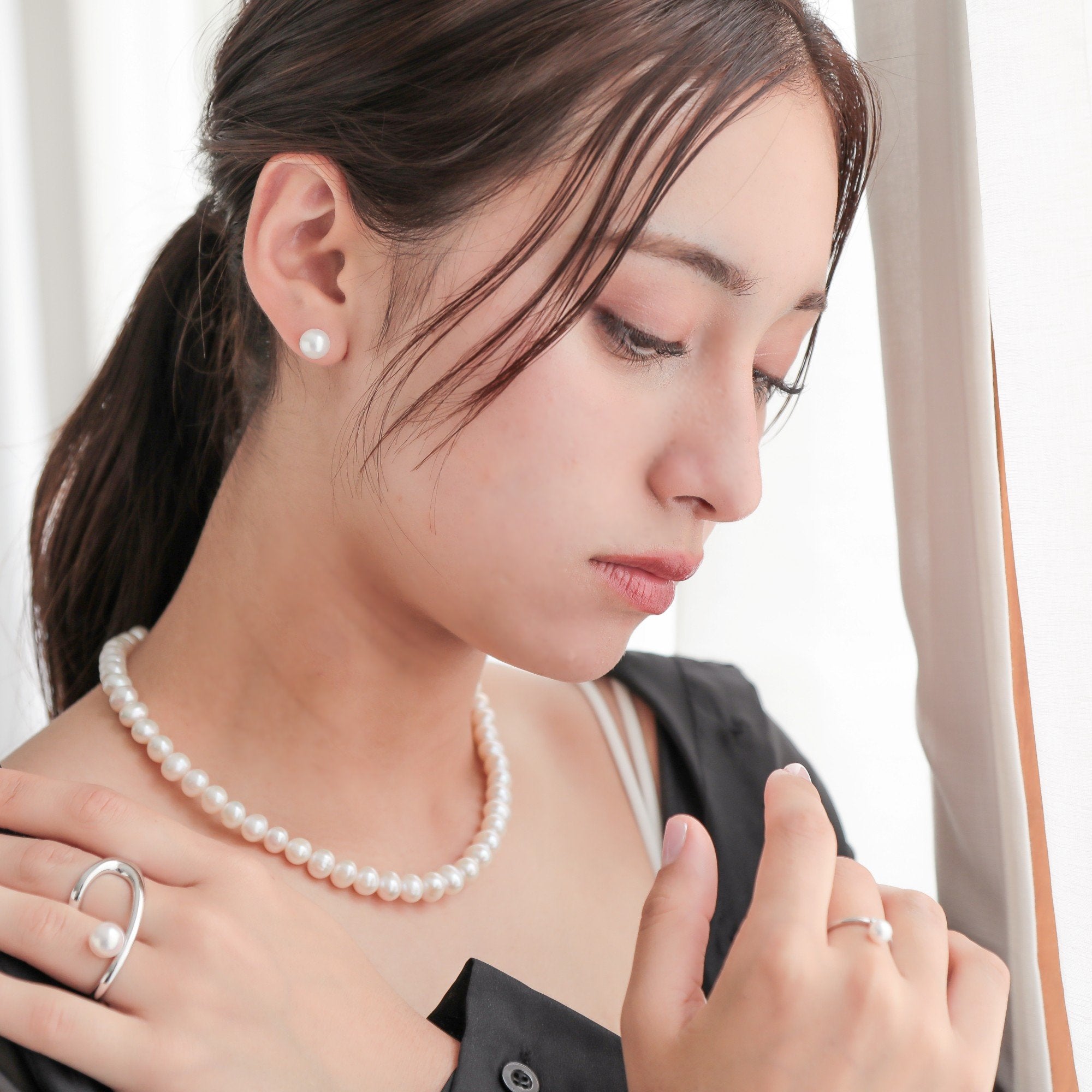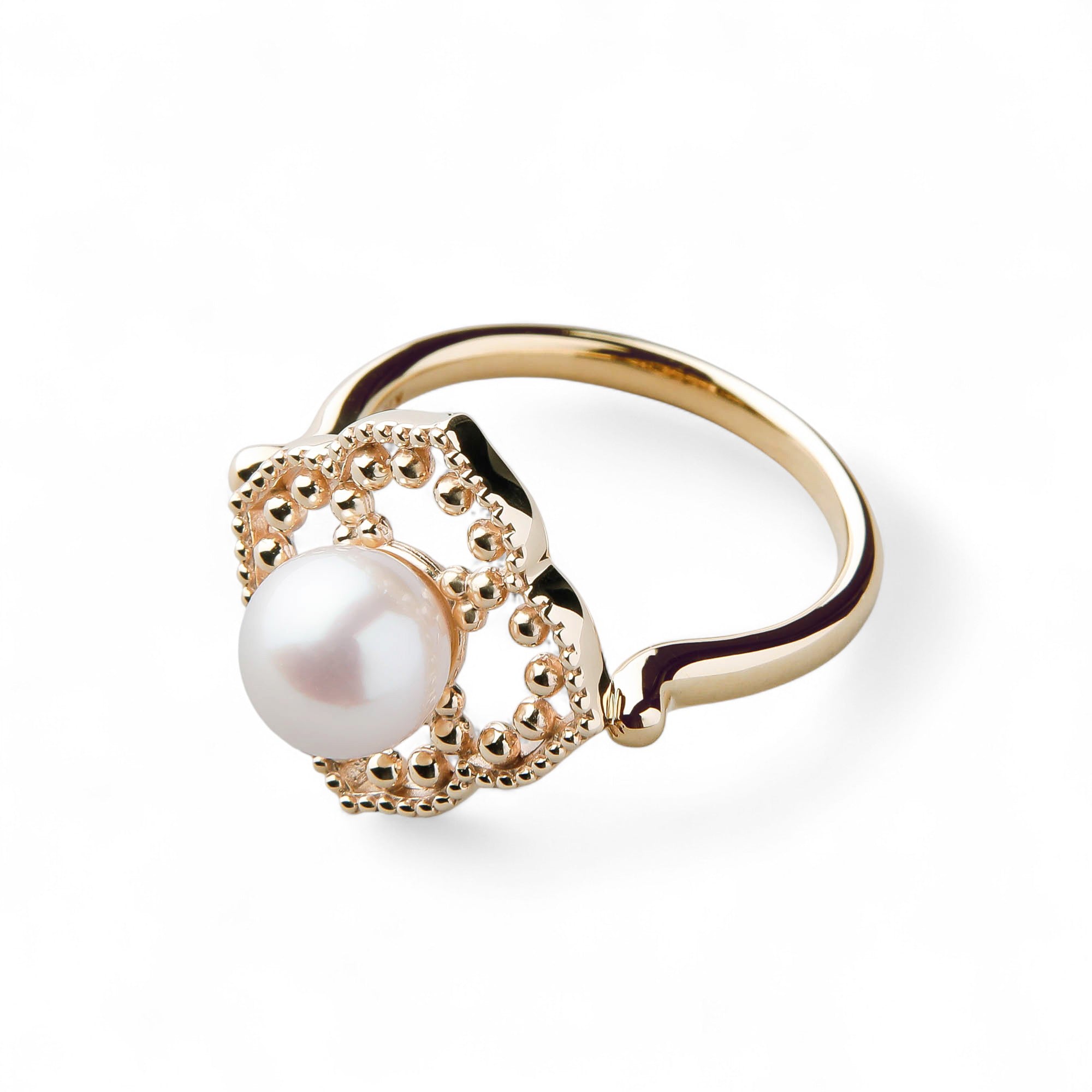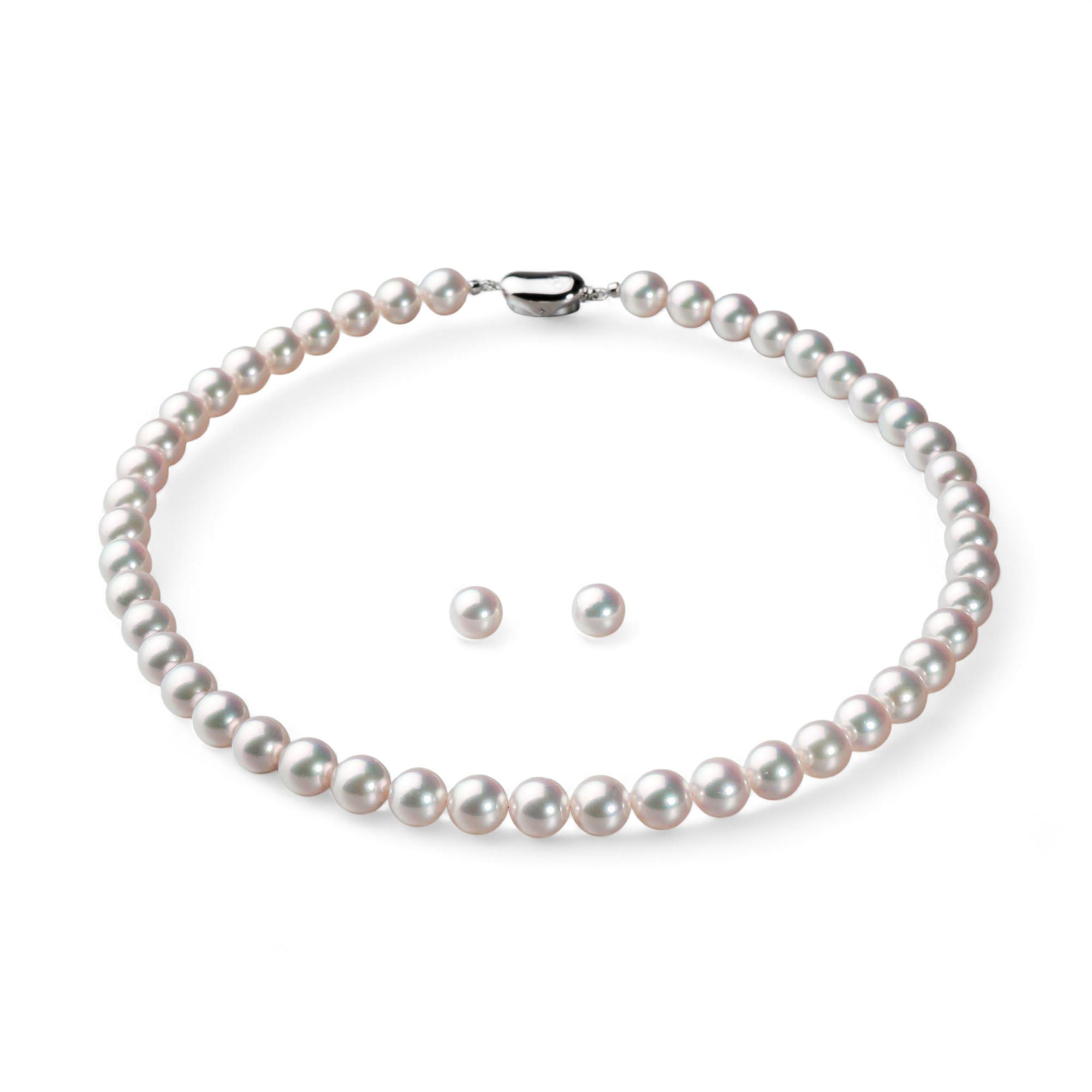The Rich Beauty of Japanese Pearls
Pearls embody the hidden beauty of nature and the mysteries of the sea. Among them, Japanese pearls are renowned for their world-class quality. Celebrated since ancient times, their essence continues to enchant people around the world. This enduring allure is crafted through the sincere handiwork and discerning eyes of skilled artisans, shaped by Japan’s changing seasons. As pearl production faces significant decline, the path forward lies in seeking harmony with the ocean. This is a story of continuous exploration and the pursuit of beauty.

1
The History and Origins of Pearls
Pearls are nature’s perfect creation, formed without any human intervention. The Bible describes the
gates of heaven as being made of pearl—twelve in total—giving rise to the term “Pearly Gates.” For
centuries, pearls have been revered as a symbol of beauty.
Unlike diamonds or rubies, pearls require no cutting or polishing, which made them one of the most
accessible and cherished gemstones since ancient times. Archaeological sites around the world have
uncovered pearl-adorned ornaments, with records from the Persian Gulf near the Arabian Peninsula
indicating that people were connected to these “jewels of the sea” as far back as 4000 BCE.
In Japan, a 5,500-year-old “Jomon pearl” was discovered at the Torihama Shell Mound in Fukui
Prefecture. Even Japan’s oldest historical text, the *Kojiki*, compiled over 1,300 years ago,
includes references to pearls as symbols of purity and elegance—showing how deeply they have been
cherished since ancient times. During the consecration ceremony of the Great Buddha at Todaiji
Temple, 4,158 pearls were used, many of which are still preserved today in the Shosoin Repository in
Nara.


2
Akoya Pearls: Japan’s Most Exquisite and Celebrated Treasure
Among Japan’s storied tradition of pearl cultivation, Akoya pearls are considered the most refined
and prestigious. Even before the advent of cultured pearls, Akoya pearls were known as the “king of
natural pearls.” Thanks to Japan’s distinct seasonal temperature variations, Japanese Akoya pearls
are globally acclaimed for their exceptional clarity, fine texture, deep luster, roundness, and
thickness—qualities that distinguish them as among the finest in the world.
The coastal areas of Mie, Ehime, Kumamoto, and Nagasaki prefectures—famous for pearl farming—are
lined with rias-style coastlines. These deeply indented bays offer calm waters, gentle winds, and
ample depth, which together encourage the growth of nutrient-rich plankton. Minerals carried
downstream from nearby mountains also play a vital role. This rich combination of sea and land
provides the ideal environment for nurturing Akoya oysters.


3
Meticulous Craftsmanship Behind Pearl Cultivation
The Akoya oyster is a naturally delicate species, highly sensitive to environmental changes, making
it historically difficult to cultivate. However, at the end of the 19th century, Kokichi Mikimoto
successfully implanted a nucleus—such as a glass bead—into an Akoya oyster, marking the beginning of
Japan’s cultured pearl industry.
In 1907, a patent was filed for producing perfectly round pearls using Akoya oysters, and since
then, various innovations have significantly increased production volumes.
Cultivating Akoya oysters begins with nurturing mother oysters for one to two years. In spring,
technicians implant the nucleus that will form the pearl. In summer, barnacles and other organisms
are carefully removed. Then from autumn to winter, it is finally time to harvest the pearls. Nearly
all of these seasonal processes are carried out by hand. Even then, only about 30% of the pearls
meet the strict quality standards required for fine jewelry. In recent years, producers have also
faced challenges such as unexplained viruses causing oyster die-offs.
After overcoming these hurdles, the cultivated pearls are sent to processing manufacturers. At every
stage—from farming to processing to grading—expert artisans bring their keen eyes and uncompromising
standards. This relentless pursuit of quality, even within a divided labor system, is what keeps
Japan’s pearl industry among the finest in the world.


4
The Deep Respect of the Japanese for Pearls
In Uwajima, Ehime Prefecture—one of Japan’s renowned pearl-producing regions—the process of
implanting nuclei into Akoya oysters is done entirely by hand. This delicate operation, often
referred to by the craftsmen themselves as a “major surgery,” is so precise that even veterans with
over 50 years of experience still find it nerve-wracking. The quality of a pearl depends on the
subtle interplay of the sea, the mother oyster, and the technique—all of which require expert
judgment. In 2019, a massive die-off of Akoya oysters occurred across Japan, and Uwajima was no
exception, with entire stocks wiped out. Still, one artisan reflects, “If pearls could be created
simply by calculation and control, they wouldn't be nearly as special.”
In another major production area, Ise-Shima, a unique tradition called the Pearl Festival is held
every year on October 22. This event honors the Akoya oysters that gave their lives for pearl
cultivation. Held in Ago Bay and Kashikojima—the heartland of Japan’s pearl industry—the festival
includes a memorial ceremony at the Kuyo-to (Memorial Tower) in Maruyama Park, followed by the
symbolic release of mother oysters into the waters at Kashikojima Port to pray for the future
prosperity of pearl farming.

Dressed in traditional white diving garments, *ama*—female free divers—once played an essential role in harvesting cultured pearls, diving into the sea to collect shellfish and seaweed.

5
WSP’s Core: The Art of Expert Selection
In recent years, rising ocean temperatures and mysterious viral outbreaks have led to a surge in Akoya oyster die-offs. Coupled with an aging workforce and a lack of successors, high-quality pearls are becoming increasingly scarce. Despite these challenges, WSP continues to provide pearls of exceptional quality—consistently exceeding expectations for their price. This enduring capability stems from WSP’s longstanding expertise as true professionals in the world of pearls.


WSP’s strength lies in its unwavering commitment to the inherent beauty of pearls and its dedication
to honest business practices. Even in today’s challenging environment, where pearl production is
rapidly declining, WSP has built long-standing, trusting relationships with pearl farmers and
processors who share the same sense of mission. This allows the company to consistently and reliably
source a wide range of high-quality pearls from across Japan.
Each pearl is rigorously graded in-house and offered based on the principle of “excellent quality at
a fair price.” As a wholesaler, WSP can procure pearls in large quantities, enabling cost
efficiencies even for high-grade pearls that would otherwise be expensive in the market. Designs are
created in-house to best suit the character of each pearl—ranging from timeless classics to unique,
expressive pieces.
By minimizing advertising expenses and instead giving back to producers, marine conservation
efforts, and above all, customers, WSP fosters a sustainable and positive cycle. Proud to be a true
“pearl professional” of Japan, WSP hopes that its pearls will enrich the hearts of those who wear
them—on special occasions and in everyday life alike.



6
WSP’s Commitment to the SDGs
WSP operates with the philosophy of sharing “Good vibes of life” forever. Under this principle, the
company embraces a “serious approach to doing good,” forming the foundation of our WSP SDGs STYLE.
At the core is the idea of “Yonpō-Yoshi”—Good for the seller, Good for the customer, Good for
society, and Good for future generations.
In pursuit of sustainable marine conservation, WSP supports and explores initiatives aimed at
reducing waste in rivers and oceans. To help restore healthy and productive marine ecosystems, a
portion of sales is donated to various organizations including the Nature Conservation Society of
Japan, the Umi to Nippon Project which promotes ocean experiences and environmental awareness, and
Florence, a certified NPO that supports child welfare.
WSP also promotes the sustainable use of pearl oysters by incorporating conchiolin—a
beauty-enhancing protein derived from pearl shells—into cosmetics. Pearl layers from damaged or
cracked pearls, which cannot be used in jewelry, are repurposed into ingredients for cosmetics and
health supplements. Furthermore, the company increases its use of upcycled and recyclable materials
in packaging and product containers.
Through pearls—treasures of the sea cherished since ancient times—WSP will continue to strive for
coexistence and mutual prosperity with nature. Sharing “Good vibes of life,” forever.











